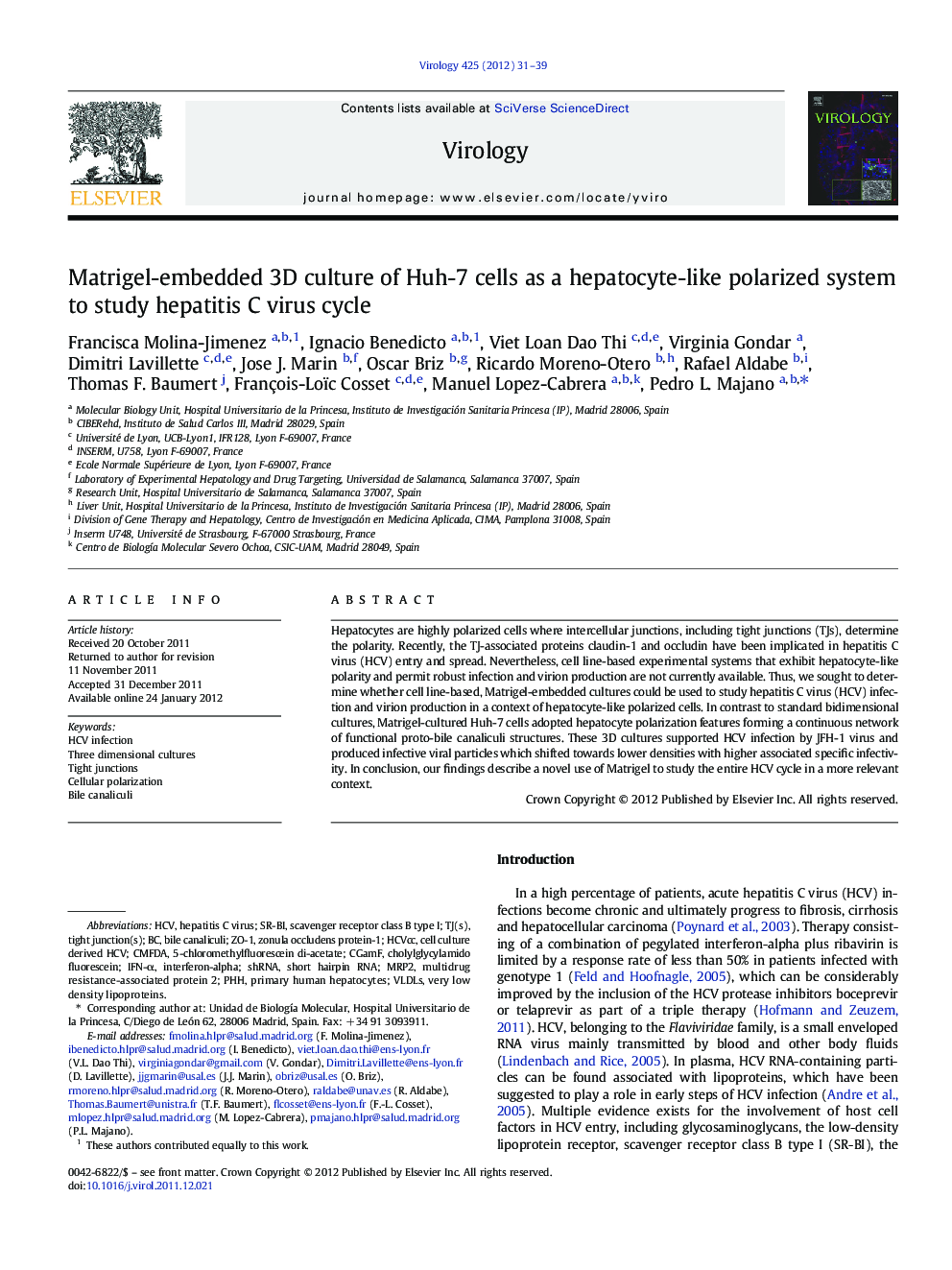| Article ID | Journal | Published Year | Pages | File Type |
|---|---|---|---|---|
| 3424488 | Virology | 2012 | 9 Pages |
Hepatocytes are highly polarized cells where intercellular junctions, including tight junctions (TJs), determine the polarity. Recently, the TJ-associated proteins claudin-1 and occludin have been implicated in hepatitis C virus (HCV) entry and spread. Nevertheless, cell line-based experimental systems that exhibit hepatocyte-like polarity and permit robust infection and virion production are not currently available. Thus, we sought to determine whether cell line-based, Matrigel-embedded cultures could be used to study hepatitis C virus (HCV) infection and virion production in a context of hepatocyte-like polarized cells. In contrast to standard bidimensional cultures, Matrigel-cultured Huh-7 cells adopted hepatocyte polarization features forming a continuous network of functional proto-bile canaliculi structures. These 3D cultures supported HCV infection by JFH-1 virus and produced infective viral particles which shifted towards lower densities with higher associated specific infectivity. In conclusion, our findings describe a novel use of Matrigel to study the entire HCV cycle in a more relevant context.
► Matrigel-embedded 3D cultures of Huh-7 cells adopt hepatocyte polarization features. ► Matrigel-cultured Huh-7 cells form functional proto-bile canaliculi structures. ► Matrigel-cultured Huh-7 cells support HCV infection by JFH-1 virus. ► HCV-infected Matrigel-cultured Huh-7 cells produce infective viral particles. ► 3D-generated virions shift towards lower densities with higher specific infectivity.
